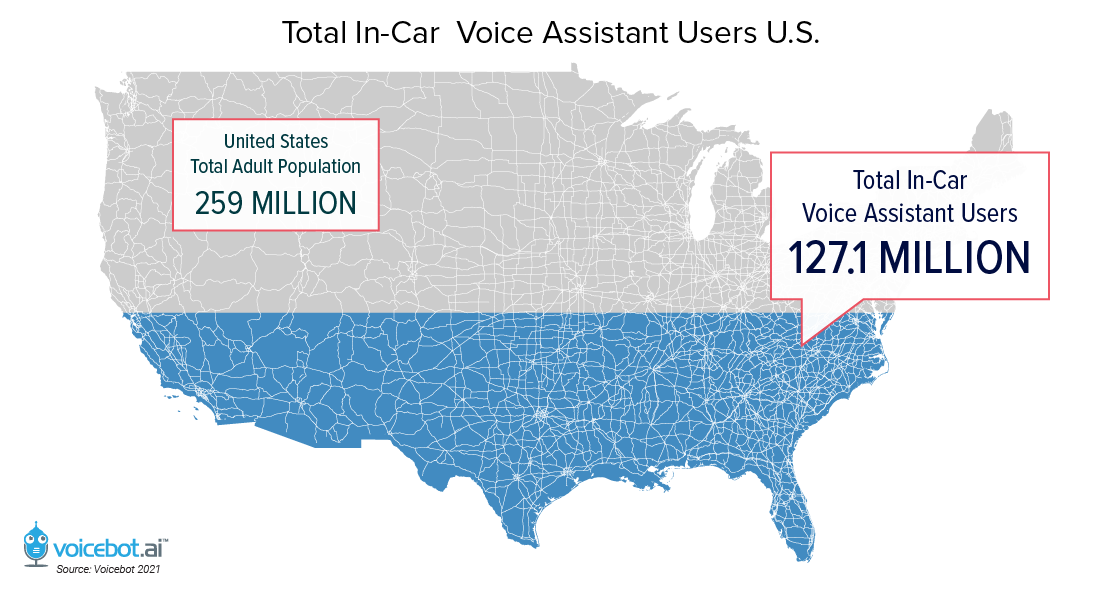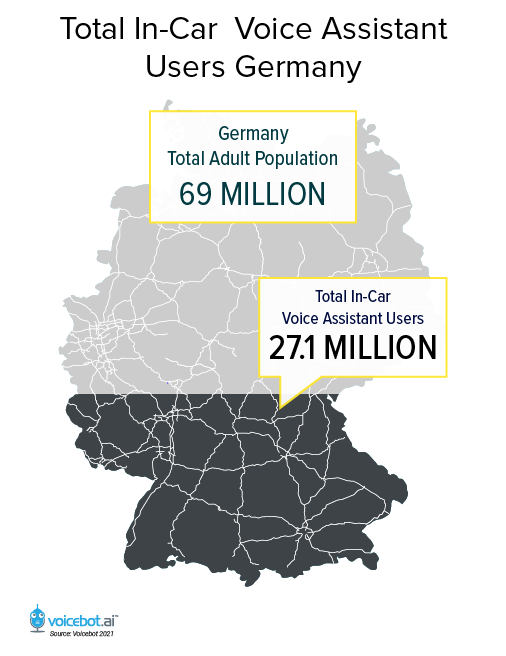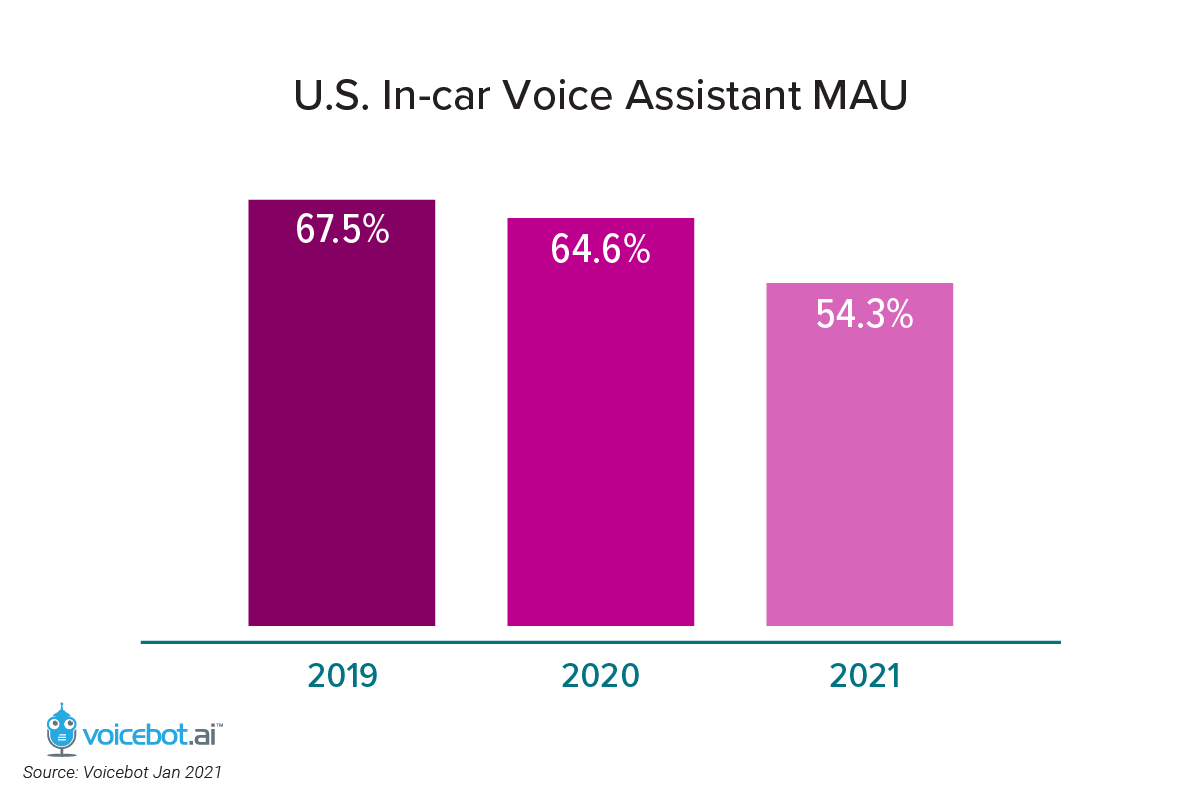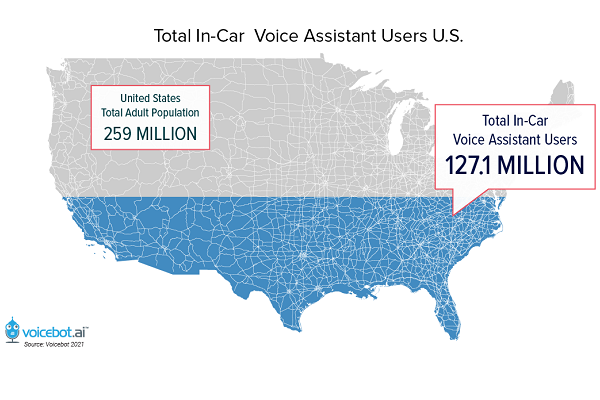In-Car Voice Assistant Users 127 Million in the U.S. with Strong Adoption in the UK and Germany as Well – New Report
Voicebot published the In-Car Voice Assistant Consumer Adoption Report 2021 this morning. The report reflects the third-year Voicebot has published consumer adoption data related to voice assistant use while driving for the U.S. The 2021 edition also expands the research scope to include data for the UK and Germany.
The data reveal that U.S. users exceed 127 million consumers with Germany at 27 million and nearly 19 million in the UK. These data show that the in-car voice assistant users were significantly higher than smart speaker owners in the U.S. and Germany and just shy of that figure for the UK. Smartphone voice assistant use is the highest overall but some people may be surprised to learn that smart speaker users still trail that of drivers in several countries.


Nearly 50 Pages of Analysis and 32 Charts
The report includes nearly 50 pages of analysis and 32 charts. Some of the highlights include:
- Total In-Car Voice Assistant Users U.S., UK, and Germany
- In-Car Voice Assistant Use Frequency U.S., UK, and Germany
- How Voice Assistant Availability Impacts Consumer Car Purchase Decisions
- Ranked Voice Assistant Use Cases for Drivers in the U.S., UK, and Germany
- Trend Data and COVID-19 Impact on In-Car Voice Assistant Use in the U.S.
- Consume Intent Around Future Use of Voice Assistants
- In-Car Voice Assistant Technology Providers by Autobrand
- And, many more…
Monthly Active Users Recede in the U.S.
One particularly interesting finding was a decline in monthly active users (MAU) of voice assistants while driving in the U.S. The MAUs represent regular users of voice assistants in the car. The decline between 2019 and 2020 was modest and within the margin of error for a national survey. We would say that regular users were flat to slightly down for that period. However, we could only say that 2021 was a notable decline. This reflects a significant behavior change during 2020. MAUs fell 10-percentage points from 64.6% in 2020 to 54.3% for 2021.

Voicebot researchers attribute this decline to the impact of COVID-19. Consumers were not in their car as often and the driving that did take place was more likely to be local trips of shorter duration. That reduced the need for a voice assistant for navigation or calling, top use cases in normal times. This shift led to more casual voice assistant users in the U.S. as opposed to regular users or frequent users. Overall, the total user base of voice assistants in the car was flat for 2021 but the frequency of use declined.
Consumer Adoption Data Plus the Industry’s Competitive Dynamics
The car represents the earliest large-scale user environment for voice assistants outside of call centers. Along with the smartphone and smart speaker, the car represents one of the big three “devices” for voice assistant use. The most prominent players in voice assistants on smartphones and smart speakers each have a solution for drivers as well. However, there is also a dominant incumbent in the car with 20 years of experience and nearly 400 million cars on the road using its voice technology. The presence of Cerence makes the voice assistant battles different from smartphones and smart speakers.
The new In-Car Voice Assistant Consumer Adoption Report 2021 offers consumer adoption data as well as analyses of the key trends driving usage and the competitive dynamics playing out between Cerence, Google, Amazon, Apple, and SoundHound. It is the most comprehensive assessment of in-car voice assistant use published to date. If you would like to have a private briefing on the findings, download the report and contact Bret Kinsella directly.
Follow @bretkinsella Follow @voicebotai
Marketers Assign Higher Importance to Voice Assistants as a Marketing Channel in 2021 – New Report
UK Smart Speaker Adoption Surpasses U.S. in 2020 – New Report with 33 Charts









